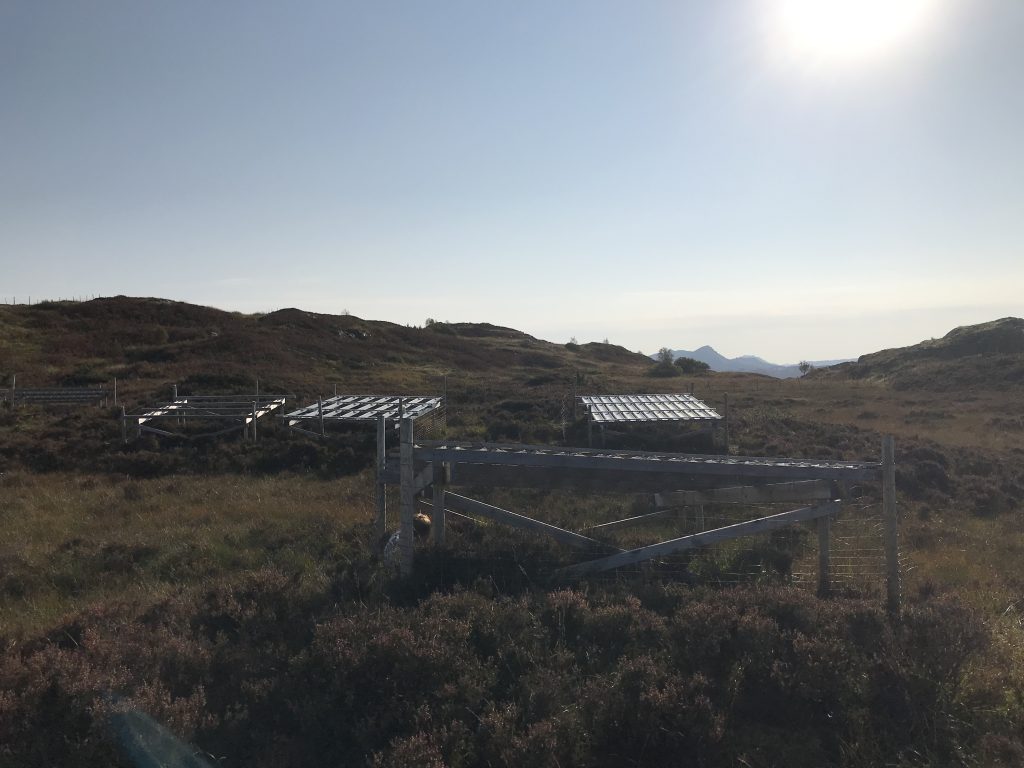Coastal heathlands and carbon storage
My name is Helene and I’ve participated in gathering data for a PhD on coastal heathlands in a project called LandPress.
Siri has been investigating how drought and succession affects the coastal heathlands and her experiment was located at Lygra, an island north of Bergen. She needed some extra data to make the models in her thesis more reliable. I thought the part of her project on carbon storage and how future climate scenarios and change of land use would affect it sounded superinteresting, so I joined the LandPress project. Another student in my class – Tage – had joined the project before me and been to the field once already. When I joined we were sent out in the field. A field trip usually took a whole day with transport and everything so Tage and I became good friends.
Unfortunately for me, Tage moved away from Bergen in 2021, and was my so far only new friend that was in the same masters programme as me that I had actually spent time with IRL (#covid). So when the second semester came around I had to find a new friend. Luckily, Nora joined the LandPress Project for her BIO299-project, so she became my new partner and we continued doing the fieldwork I started the previous semester. I managed to go to the field several times with Nora, and we even got to participate on some additional fieldwork at some other sites! Lygra is beautiful, but you can get a liiiittle bit tired of lying in the plots which essentially is a cage with a very low roof where you’re not supposed to step on all the plants in there, because hardcore science is goin on. «Also there are vipers in the area, so watch out for those when you’re in there,» Siri said right before my first field trip. Nice;) Luckily, the additional data Siri needed were mostly winter measurements, so I never saw any vipers.
The actual fieldwork was very nice. You walk around in a beautiful coastal heather landscape, doing not especially physically demanding work. 2/3 of the plots are partially covered, so when it rains (or snows (or haigls!)) it is quite nice to be in the plots. The measurements we did were on soil respiration (yes, the soil breathes! At least the microbes, decomposers and the belowground parts of the plants do), soil temperature and soil moisture. We measured the soil repsiration with a fancy and superexpensive machine. It is an infrared gas analyzer that measures CO2 in parts per million (ppm). It is hooked up to a field computer (that can handle rain (!), and I can guarantee you that a wet computer looks and feels extremely wrong) in one end and has some tubes sticking out of the machine in the other.

Conceptual figure of set-up for measuring soil respiration.
In the plots are a couple of plastic pipes installed in the soil. You start the program on the fieldcomputer, draw your breath real deep, put the tube with a cap on the pipe in the soil and make sure it is on properly, press record on the computer and breathe out. The recordings should be at least 90 seconds long. It sounds nice and easy, but the computer problems you have with a fieldcomputer when it rains, snows or haigls is not recommended for high-tempered people (like myself). While the gas analyzer records the soil respiration you can measure the soil temperature and soil moisture. That is done by sticking the end of a thermometer and moisture meter in the soil and reading off the numbers on the display, i.e. actually nice and easy. Don’t forget to take good (i.e. accurate and comprehensive) field notes. IT IS KEY. Your future self will thank you.
BIO299 is a wonderful course since it gives you a LOT of freedom to choose what you want to learn and how you want to learn it. But that is also what makes it a challenging course. You need to be self-disciplined and prioritize a workload that might be a bit difficult to foresee into an already busy schedule of other courses. In my experience, a BIO299 project is a very good way to give you a taste of what kind of work a master’s degree consists of.
So what have I learned? I’ve learned a lot about carbon dynamics in coastal heathlands, and also that planning is super important, but even more important is the act of actually paying attention to the plan and following it to some degree while time passes. (Also, that it is very easy to spend time on the most fun stuff first, e.g. fieldwork and poster-making).
All in all – I REALLY recommend BIO299, as long as you plan well. Or else it will be more stressfull than it needs to be. Good luck!


